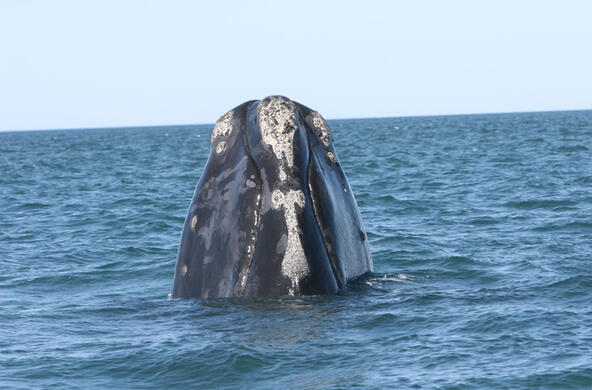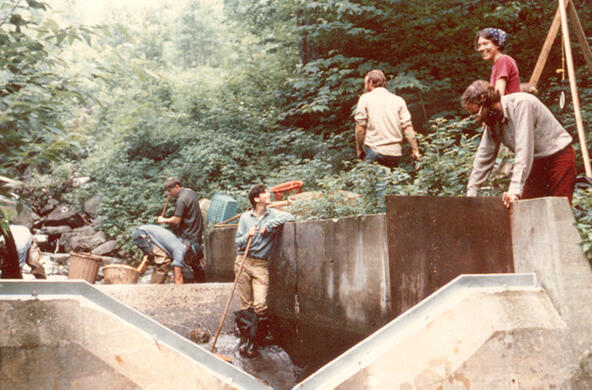This post is an update of a posting from five years ago.
Hydraulic fracturing (aka fracking) has become a standard practice for the production of oil and gas, not just from the shale-gas areas, such as the Marcellus shale in the Northeast, but from a wide variety of situations including the Permian Basin of Texas.
Water, with various added chemicals, is injected into a well under pressure to fracture the host rock and release oil and gas. This solution returns to the surface, along with oil and gas, and with waters that are naturally found at depth. Waters returning to the surface are known as “produced” or “flow-back” waters, of which the return of injected water is normally only a small percent.
As hydraulic fracturing has increased in popularity in recent years, the U.S. is now among the top producers of oil and gas in the world. In recent years, the amount of water used in the process has increased by up to 770% for some wells. Some of these are located in areas with limited availability of water (e.g., West Texas), where the water must be obtained from groundwater, which is not sustainable.
In the Marcellus shale region of Pennsylvania, the flow of produced water returning to the surface has increased up to 550%, confronting operators with a problem of wastewater disposal. Some water is reinjected and reused in subsequent wells, while other waters are treated and released into surface streams, potentially with contamination. Some chemical constituents—bromine, strontium and boron—are not easily removed in treatment and remain as a “signature” of fracking operations. Nevertheless, a recent study in Pennsylvania found no relation between the number of oil and gas wells in 25 watersheds and known chemical signatures of flowback waters, and no apparent impacts on microbial and benthic macroinvertebrates—good indices of habitat quality for fishes and other higher organisms.
The actual process of fracking itself is not necessarily harmful, if it is carefully instituted and regulated following well-studied procedures to establish best practice. Indeed, the petroleum industries should encourage and embrace such regulation, for it would allow them to move forward with their business with greater public trust and less litigation, despite the fact that it might shave a few cents off the bottom line of their profits.
Various studies from earth scientists in Duke’s School of the Environment all point to contamination of surface and groundwaters when hydraulic fracking is performed without proper well-casings and careful attention to waste-water management. When spills and leaks occur, local streamwaters bear the chemical signature of flow-back water. In some cases, flowback waters contain low levels of radium, which is of special concern.
I am not in favor of an expanded use of fossil fuels from any source. We must get off the rich diet of fossil fuels if we are to avoid the worst of potential changes in our climate. Because it can potentially supply inexpensive natural gas for another generation, fracking promises that we will delay the transition from fossil fuels to renewable energy.
In our effort to generate electricity, to the extent that natural gas replaces coal, we will lower our emission of various pollutants to the atmosphere—carbon dioxide, nitric oxide, sulfur dioxide and mercury. Power plants using natural gas also use much less water than those generating power from coal. But, natural gas is not the panacea: a penny or two of royalties from natural gas production could offer substantial funding for the further development and implementation of solar, wind, tidal and geothermal power with much lower impact on the quality of our air and freshwater and a higher impact on our quality of life.
References
Jackson, R. B., Vengosh, A., Carey, J. W., Davies, R. J., Darrah, T. H., O’Sullivan, F., Petron, G. 2014. The environmental costs and benefits of fracking. Annual Review of Environment and Resources 39: 327-362
Kondash, A.J., N.E. Lauer and A. Vengosh. 2018. The intensification of the water footprint of hydraulic fracturing. Science Advances 4 doi: 10.1126/sciadv.aar5982
Kondash, A.J., E. Albright, and A. Vengosh. 2017. Quantity of flowback and produced waters from unconventional oil and gas exploration. Science of the Total Environment 574: 314-321.
Mumford, A.C., et al. 2020. Shale gas development has limited effects on stream biology and geochemistry in a gradient-based, multiparameter study in Pennsylvania. Proceedings of the National Academy of Sciences 117: 3670-3677.
Olmstead, S.M. et al. 2013. Shale gas development impacts on surface water quality in Pennsylvania. Proceedings of the National Academy of Sciences 110: 4962-4967.
Warner, N.R. C A. Christie, R.B. Jackson, and Avner Vengosh. 2013. Impacts of shale gas wastewater disposal on water quality in western Pennsylvania. Environmental Science and Technology doi.org/10.1021/es402165b
Warner, N.R., Darrah, T.H., Jackson, R.B., Millot, R., Kloppmann, W., Vengosh, A. 2014. New tracers identify hydraulic fracturing fluids and accidental releases from oil and gas operations. Environmental Science & Technology, 48 (21), 12552–12560








